In Ninh Binh province, in just the last decade, numerous medicinal herb-growing cooperatives have formed and thrived economically, providing local farmers with good incomes. A notable example is the Yen Son Medicinal Herb Production and Consumption Cooperative in Tam Diep city, established in 2017, which has developed a 16-hectare medicinal herb farm growing varieties such as cat’s whiskers, turmeric, fleeceflower root, and gotu kola, among others.
The Dong Son Medicinal Herb Cooperative in Tam Diep specializes in eucalyptus cultivation and essential oil distillation, while the Khanh Cong Medicinal Herb and Mushroom Cooperative in Yen Khanh district, established in 2017, cultivates medicinal herbs across 15 hectares. The Cach Tam Medicinal Herb Growers’ Group in Kim Son district was founded in 2022, and the Nam Son Medicinal Herb Production and Processing Cooperative in Tam Diep was introduced in December 2024, focusing on safe and high-quality herb cultivation and processing to connect to markets and enhance the value of local products.
Accompanying the leaders of Gia Vien district, we witnessed the success of local farmers and cooperatives engaged in medicinal herb cultivation. Located at the foot of Bai Dinh Pagoda mountain, Sinh Duoc village in Gia Sinh commune is renowned for its long-standing tradition of growing and utilizing traditional medicinal herbs. This mountainous village is part of the Hoa Lu Special-use Forest buffer zone. According to the Forest Planning and Investigation Institute, the Hoa Lu Special-use Forest is home to 677 plant species, 311 of which possess medicinal properties.
LOCAL COMMUNITY BENEFITS FROM MEDICINAL HERBS
Mr. Le Van Cuong, Secretary of the Gia Vien District Party Committee, shared that the name Sinh Duoc village originates from a legend involving Zen Master and famous physician Nguyen Minh Khong (11th century) seeking a cure for the “Hóa hổ” disease afflicting the Ly dynasty king. The master discovered numerous medicinal plants growing naturally in the region’s hills and named the area Sinh Duoc. Today, the Sinh Duoc hills still abound with precious medicinal plants such as flathead mullet, milk thistle, Chinese yam, lemon basil, betel leaf, and perilla.
In April 2022, the Ninh Binh People’s Committee issued a decision recognizing Sinh Duoc village as a craft village. The Sinh Duoc Cooperative, established in 2014, organized the production and cultivation of traditional medicinal herbs in the mixed gardens of household members. They then purchased and processed these herbs into healthcare products such as bathing herbs, shampoo, massage balm, and scented soap. One of their highly acclaimed products is a foot soaking salt that combines mineral salt with herbal extracts. This precious remedy was once used by ancient kings for health maintenance and effectively and safely alleviates joint pain while addressing associated issues like insomnia, cold hands and feet, and poor blood circulation.
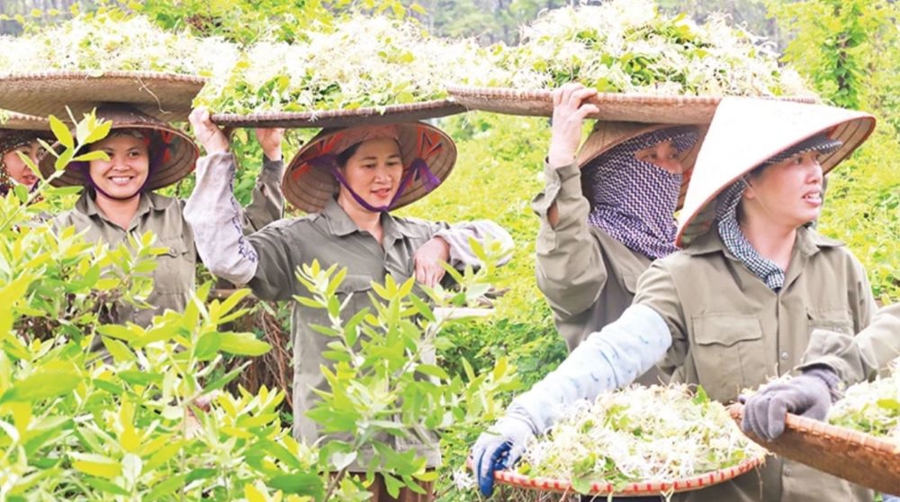
Notably, several of the Cooperative’s products have been certified with a 4-star OCOP rating by Ninh Binh province, including the Bodhi Leaf Painting, Foot Soaking Salt, and An Thai Tea. Currently, the Sinh Duoc Cooperative operates three production facilities for processing medicinal herb-based products. In 2024, the Cooperative’s revenue exceeded 30 billion VND, providing employment for over 70 local people with monthly incomes ranging from 6 to 15 million VND per person.
Alongside its production activities, the craft village of Sinh Duoc is developing experiential and eco-tourism, offering over 2,000 square meters of attractions, including a Bodhi Leaf Art Gallery, herbal mineral hot baths, culinary experiences, homestays, and medicinal herb field visits, attracting numerous domestic and international tourists.
PRESERVING PRECIOUS MEDICINAL PLANTS
Continuing our journey, we paid a visit to Bai Dinh Pagoda in Gia Sinh commune, renowned not only as one of the largest spiritual complexes in Vietnam but also as a guardian and promoter of traditional values associated with traditional medicine. At Bai Dinh Pagoda, the medicinal herb gardens are meticulously planned, harmoniously integrating with the overall architecture to create a unique ecological and cultural highlight within the Buddhist space.
Mr. Nguyen Xuan Trung, representative of Xuan Truong Construction Company, the investor of Bai Dinh Pagoda, shared that the area used to be mostly barren hills. However, since the construction of the pagoda, they have planted numerous precious medicinal herbs to green the empty spaces and gardens within the pagoda premises. This initiative not only contributes to a serene and peaceful atmosphere but also preserves the gene pool of valuable medicinal plants, serving research and treatment according to ethnic medicine methods.
Accompanying a delegation of scientists, including professors, associate professors, and doctors specializing in medicine and pharmacy, we visited Den Duc Thanh Nguyen (the temple of National Master Minh Khong) in Tien Thang commune. Here, the Gia Vien district authorities showed us the Nguyen Minh Khong medicinal herb garden, which cultivates and preserves over 100 species of medicinal plants, divided into several areas: the Den Thanh Herbal Garden, the People’s Medicine Garden, and the Life Garden. The “Life Garden” is a unique showcase of medicinal plants categorized according to different stages of life, from infancy to old age. It is not only a repository of valuable medicinal herbs like golden tea, black mushroom, cuckoopint, gastrodia, and agarwood but also a captivating destination for visitors.
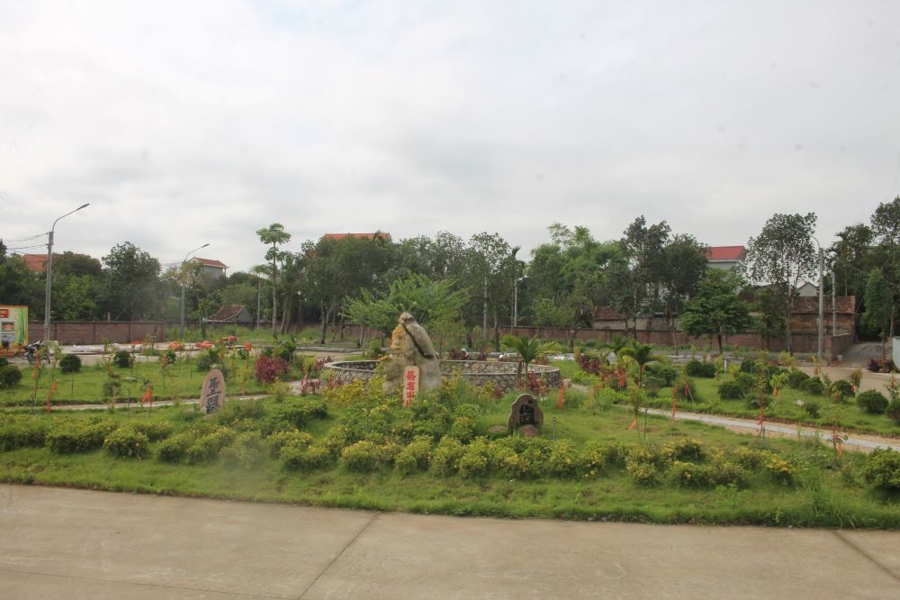
According to Ms. Vu Thi Duoc, Vice Chairman of the Gia Vien District People’s Committee, in recent years, Ninh Binh province has made significant strides in developing medicinal herb cultivation areas, particularly through the integration of agriculture, eco-tourism, and traditional value preservation. The province has also collaborated with the Institute of Agricultural Genetics to research and conserve two valuable medicinal plants, golden bell and three-leaf caper, in Gia Sinh and Son Ha communes, across a 4-hectare area, yielding 12-16 tons of medicinal herbs annually.
“Gia Vien district has taken the lead in establishing medicinal herb gardens and preserving ancient herb gardens at historical sites such as Thung Ong in Thung Lau, Thung Ba in Thung La of Gia Hung commune, Thanh Hoa – golden tea at Kiem Linh mountain, and the Royal Herb Garden at Den Thanh Nguyen,” shared Ms. Duoc.
Despite the potential, most medicinal herb cultivation models in Ninh Binh are currently limited to farming and processing, failing to fully leverage the “spiritual land” aspect of the region’s cultural, spiritual, and natural heritage. The development of the medicinal herb sector in Ninh Binh still faces challenges, including a lack of linkage between production, processing, and eco-tourism.
COMBINING MEDICINAL HERB CULTIVATION WITH SPIRITUAL TOURISM
To sustainably develop the “spiritual land of medicinal herbs” in Ninh Binh, Ms. Vu Thi Duoc suggested focusing on strategic solutions such as comprehensive planning for medicinal herb cultivation areas that conserve biodiversity, integrating agricultural, experiential tourism, and spiritual cultural models by establishing herbal gardens at historical sites, and applying science and technology in seed production, preliminary processing, and building internationally recognized product brands.
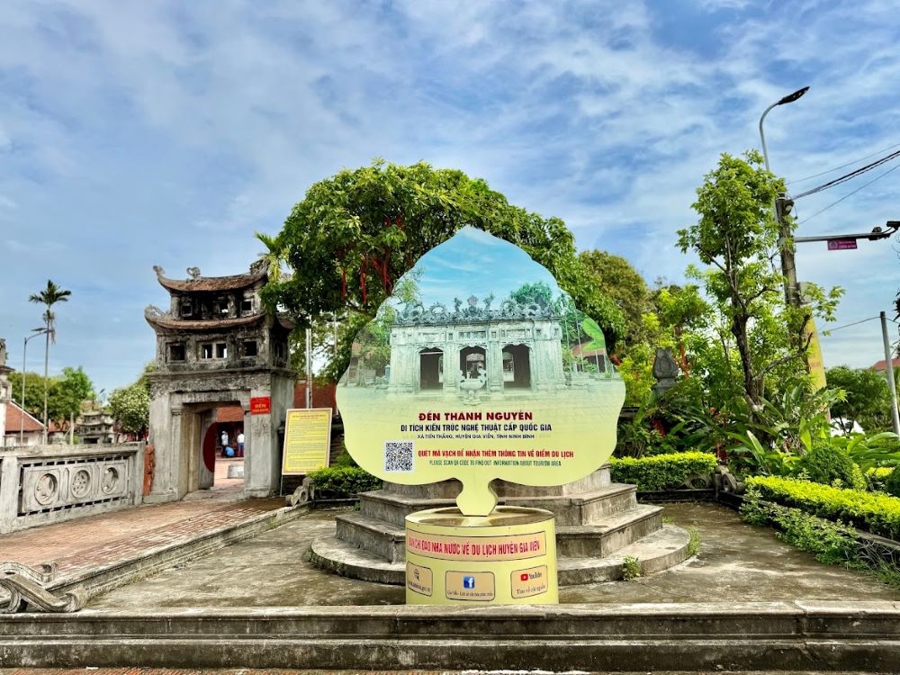
According to Ms. Duoc, developing a comprehensive plan is a prerequisite. This plan should be based on the ecological, climatic, and soil conditions of each sub-region to identify suitable areas for valuable medicinal herbs like golden tea, licorice, ginseng, and Cúc Phương ginseng. The zoning should be based on scientific research, integrating ecological map data and local knowledge, and aligned with the province’s socio-economic development plan for the 2021-2030 period, with a vision towards 2050.
“Leveraging cultural and historical elements (such as Trang An, Cuc Phuong, and the ancient capital of Hoa Lu) in conjunction with medicinal herb development will be a strategic direction for the future, enhancing product value, creating tourist attractions, and establishing the unique ‘spiritual land of medicinal herbs’ brand associated with Ninh Binh,” Ms. Duoc asserted.
Additionally, Ms. Duoc suggested designing the medicinal herb farm model as an open farm where visitors can actively participate in activities like herb harvesting, learning about processing techniques, and purchasing local products.
The full content of this article was published in the Vietnamese Economic Magazine, Issue 26-2025, released on June 30, 2025. Kindly refer to the link: https://postenp.phaha.vn/tap-chi-kinh-te-viet-nam/detail/1473 (in Vietnamese) for further details.
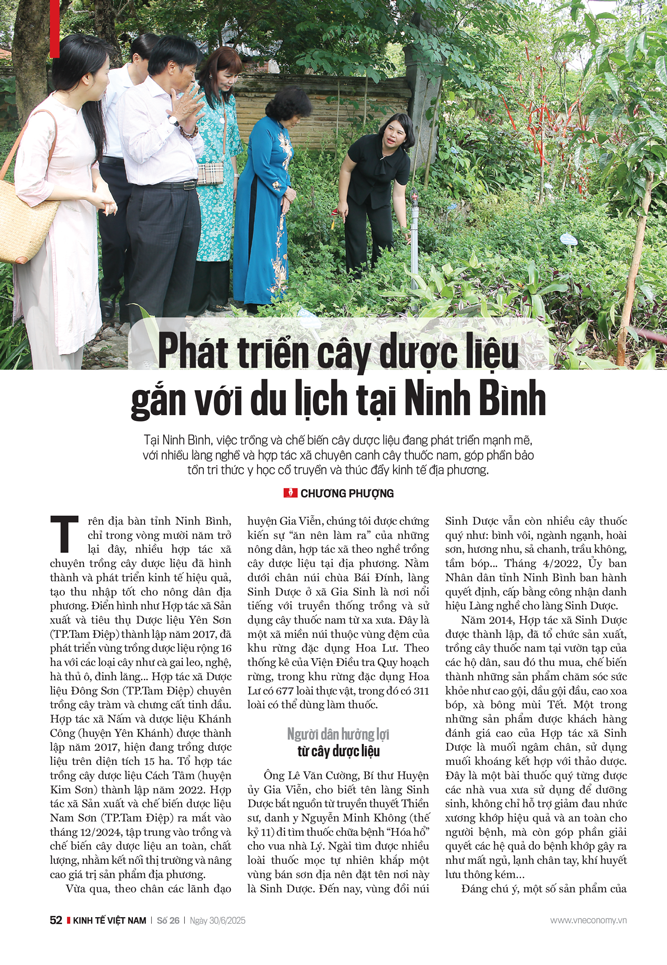
The Emerging Phu Tho Province: A Visionary Escape with an 18-Hole Golf Course and a Lavish Resort Spanning 100 Hectares, Backed by a Robust Investment of Over VND 1,500 Billion
“The picturesque province of Hoa Binh is set to welcome a transformative development with the recent approval of the Doc Lap Golf and Resort project by the Provincial People’s Committee Party Executive Committee. This ambitious undertaking is envisioned as a premium getaway, offering a seamless blend of leisure and luxury amidst the serene beauty of Doc Lap commune, Hoa Binh city.”
Prime Minister to Receive Proposal for Ninh Binh Airport Construction
The government office has issued a communiqué conveying Deputy Prime Minister Tran Hong Ha’s directives on the proposal to construct an international airport and a network of inter-regional transportation infrastructure in the prospective new Ninh Binh province, which would be formed through the merger of three localities.
CT Group Invests in a Luxurious $388 Million Resort in Ninh Binh
The luxurious eco-tourism and resort development, Yen Quang Lake, spanning 274 hectares in Yen Quang and Van Phuong communes, Nho Quan district, has released its environmental impact assessment report. This prestigious project, nestled in the west of Ninh Binh province, is part of a larger commercial, service, and entertainment complex.
The Rise of Ninh Binh: A Tourism Boom in Just Six Months
The Ninh Binh tourism industry has witnessed a remarkable surge in the first half of 2025, attracting over 7.2 million visitors and achieving nearly 80% of its annual target. Notably, the lotus pond at Hang Mua, in its full blooming splendor, has emerged as a summer attraction, enchanting visitors with its ethereal beauty.
The Cheap Fruit in Vietnam Becomes a Priceless Treasure in Japan: Unveiling the “Secret” Medicinal Treasure
This is the fruit that’s in season in Vietnam, with a price range of just 11,000-18,000 VND per kilogram. However, in Japan, this fruit is sold at a premium.

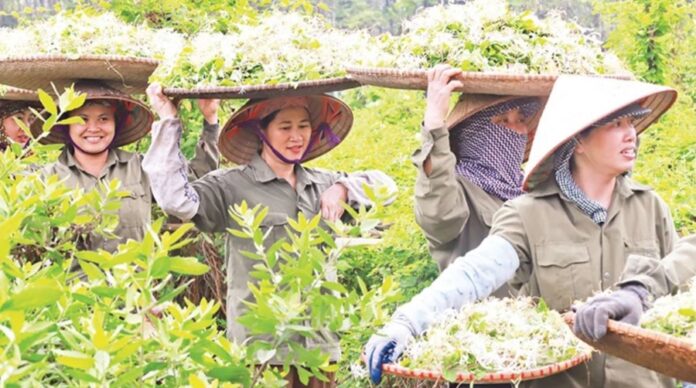


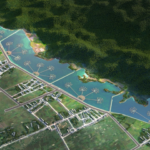
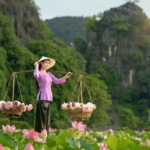




![[Photo Essay]: Experts, Managers, and Businesses Unite to Forge a Path Towards Sustainable Green Industry](https://xe.today/wp-content/uploads/2025/07/z678592918-150x150.jpg)


![[Photo Essay]: Experts, Managers, and Businesses Unite to Forge a Path Towards Sustainable Green Industry](https://xe.today/wp-content/uploads/2025/07/z678592918-100x70.jpg)







